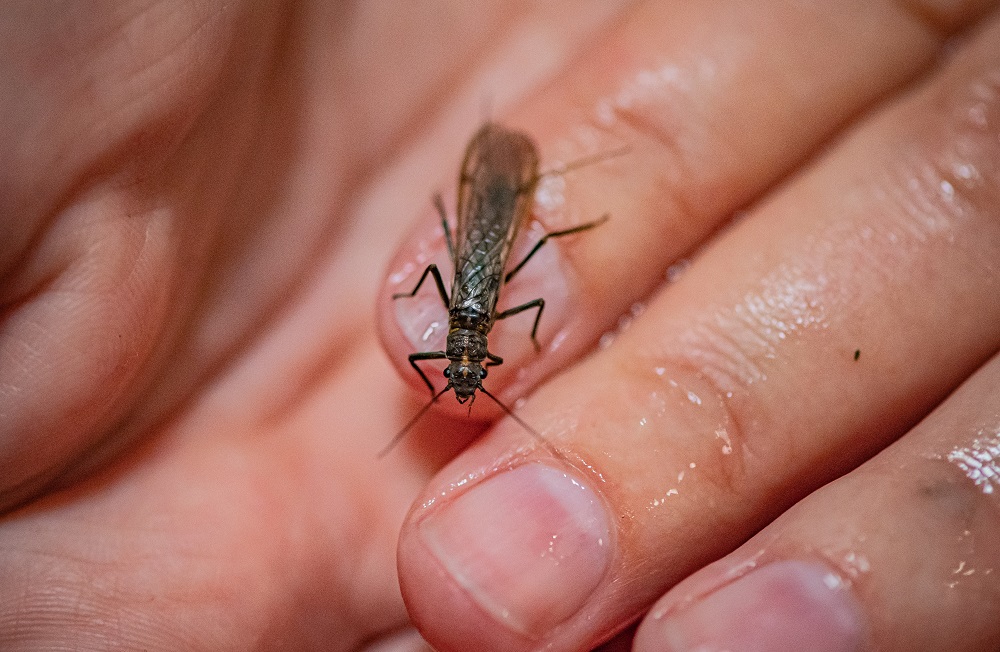Race to save critically endangered insect in North Wales
Conservationists at Chester Zoo have become the first in Europe to successfully breed a critically endangered insect that was feared extinct for 22 years.
Having not been recorded since 1995, two small populations of Scarce Yellow Sally Stonefly were found in the River Dee in North Wales – believed to be the only remaining location for the species in the UK.
Staff at the conservation zoo, renowned for its work to bring species back from the brink, were called in by Buglife Cymru to start an emergency breeding effort – part of a rescue mission to save the species from extinction following its rediscovery.

Scarce Yellow Sally Stonefly was rediscovered in the River Dee after 22 years without a sighting (Buglife).
Scarce Yellow Sally Stonefly is a critically endangered species that was first identified in the River Dee in 1959 and was regularly recorded up until 1995, when subsequent surveys failed to locate any living populations in the UK. The species was presumed to have gone extinct in Britain, while a small number of populations were diminishing across Eastern Europe.
In 2022, conservationists from wildlife charities Buglife Cymru, Chester Zoo, the Welsh Dee Trust and freshwater invertebrate specialist John Davy-Bowker set about sampling and carefully collecting a small number of the stoneflies from the areas where they were rediscovered.
Thirty stoneflies were then carefully transferred to a special behind-the-scenes facility at Chester Zoo where a dedicated team of specialists set about meticulously studying the insect during its lifecycle. Experts believe it to be the first time ever that the species has been successfully bred and reared through its complete lifecycle in a zoo setting.
Joe Chattell, an aquarist at the zoo, said: "When just 30 Scarce Yellow Sally Stoneflies arrived at the zoo, the scientific data on the species was extremely limited. They were so few in number and, living for a period of just four to six weeks as adults, we really had no room for error in our efforts to save them. We had to learn as much as we could, as quickly as we could, to help them back from the brink.
"We've been able to record and document every tiny detail about the stoneflies and their larvae – beginning by replicating their wild environment, which is highly oxygenated water on the riverbed caused by water passing over cobbles, in our specially created breeding facilities. We then tweaked the lighting and temperature conditions each day to mimic a normal 24-hour cycle, while also including seasonal variations – a lot of intricate work goes into saving a tiny insect from extinction.
"In just a few weeks we were able to understand the species and its lifecycle, breeding patterns and favoured environment. Everything we have learned so far, including every slight tweak we made, has been meticulously recorded and given us a detailed blueprint which we hope will set the foundations for a conservation breeding programme for the critically endangered insect – all while helping to further increase the small surviving population in the River Dee.
"We're enormously proud to be the first zoo to successfully breed this special stonefly, adding valuable scientific insight into the project with our partners, Buglife Cymru, who are safeguarding the species and its future here in the UK."
Conservationists now hope their species-saving efforts will go on to secure additional long-term funding for a conservation breeding programme to help further boost the wild population in the River Dee.

